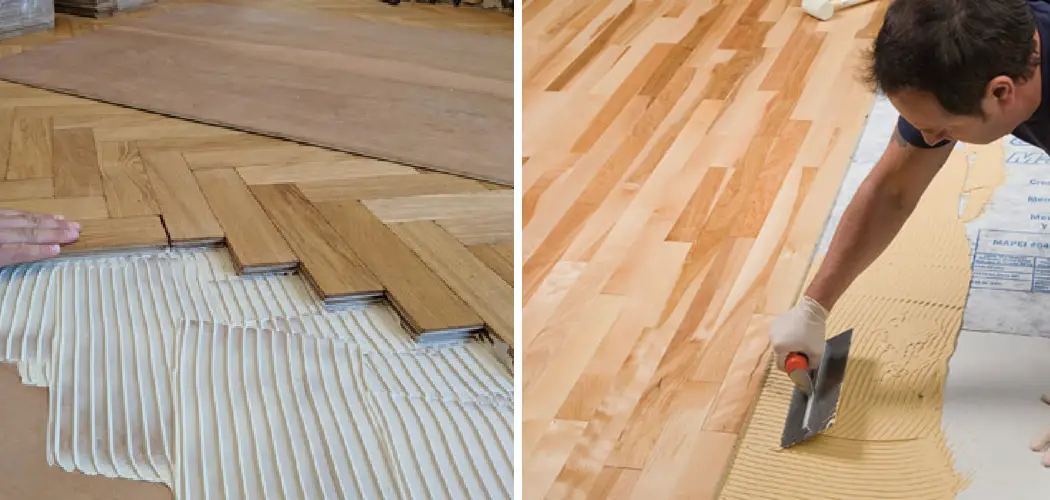Are you considering doing a DIY wood flooring project? Installing new floors can be a big job, but it doesn’t have to be intimidating. One of the most important steps in installing your wooden floor is securing it with adhesives, and this process doesn’t have to be difficult.
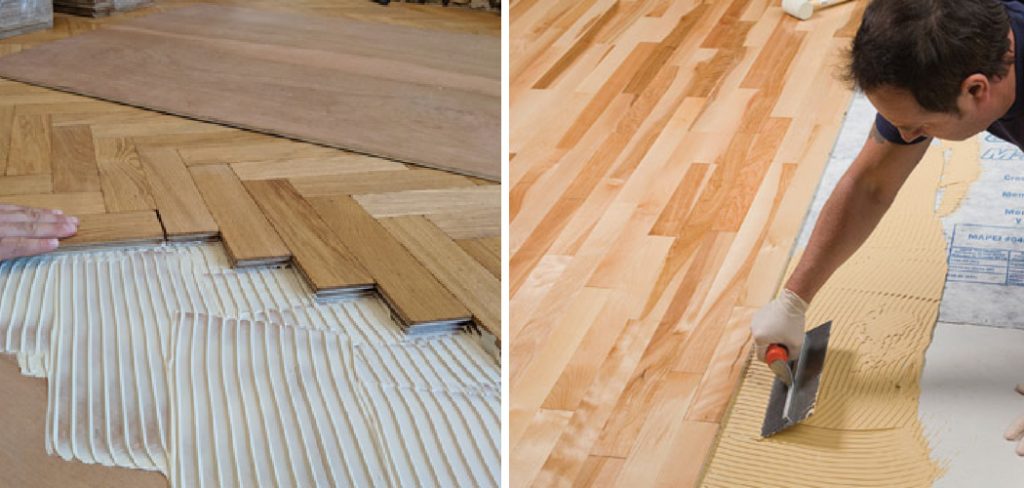
In this blog post, we’ll walk you through all the steps for how to glue wood flooring- from applying adhesive to laying down each board – so that your project will look professional and last for many years. Read on for helpful tips on how to securely glue down your wooden floor!
Supplies You Will Need to Glue Wood Flooring
- Appropriate adhesive
- Paintbrush/roller (depending on the type of adhesive)
- Utility knife and straightedge
- Chalk line, marking pencils, or fine-tip markers
- Wood flooring planks
- Mallet or rubber hammer
- Carpenter’s square, T-square, or level
- Spacers
Step-by-Step Guidelines on How to Glue Wood Flooring
Step 1: Choose an Appropriate Adhesive
Adhesives come in different types and strengths, so you want to make sure you select the best one for your project. For example, if you are installing hardwood floors, use a moisture-resistant adhesive that can handle the high amounts of humidity in these areas. Choosing the wrong type of adhesive may cause your floor to come apart after a few months.
Step 2: Prepare the Subfloor
Before you begin gluing your wood flooring, make sure to prepare the subfloor. Sweep, vacuum or dust mop it thoroughly to get rid of any dirt and debris before you begin. A clean surface is essential for a good adhesive bond. If necessary, use tape to secure loose boards or repair cracks and holes.
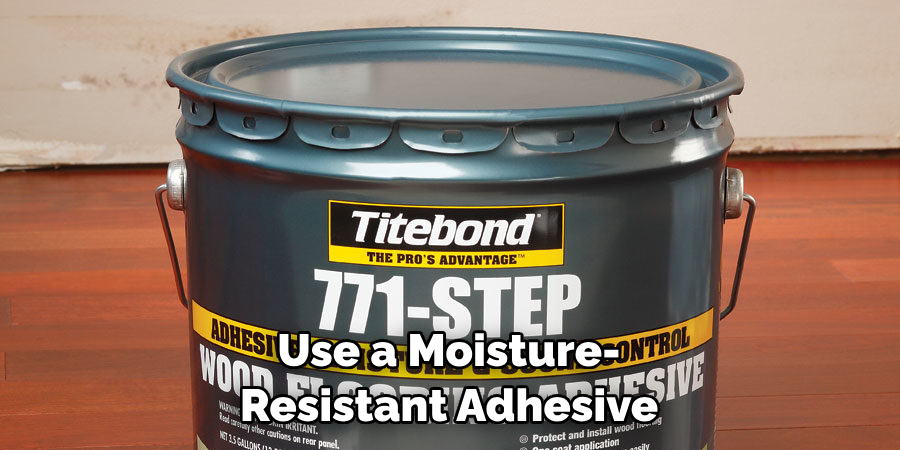
Step 3: Apply Adhesive to Your Subfloor
Using a paintbrush or roller, spread the adhesive evenly over the subfloor. Start in one corner of the room and work your way out. Pay attention to seams between boards and apply extra adhesive for extra stability. You may need to let it sit for a few minutes before you lay down the wood flooring planks.
Step 4: Lay Down Your Planks
Start in one corner of the room and begin laying down your wood flooring planks, using spacers to leave a gap between each board for expansion. Make sure you line up the tongue and groove of each plank with the adjoining plank so they fit together properly. Use a mallet or rubber hammer to tap the planks into place.
Step 5: Cut Your Boards (if necessary)
If necessary, you may need to trim your boards to fit around walls or other obstacles. To do this, mark each board with a chalk line and use a utility knife and straightedge to cut it down. Once all of your boards are in place, remove the spacers and fill in any gaps with wood putty. While cutting the boards, always wear safety goggles and never cut more than one board at a time.
Step 6: Clean Up
Once all of your boards are laid down, clean up any excess adhesive that has leaked out from between the planks. Use a damp cloth to pick up any residue or spills before it sets. If you do this immediately after installing, you’ll be able to clean up easily and avoid any damage to the finished floor.
You did it! After following these easy steps, your floor should be securely glued down and ready for use. Keep in mind that it may take a few days for the adhesive to fully cure, so wait a couple of days before walking on it or moving furniture into place. Good luck!
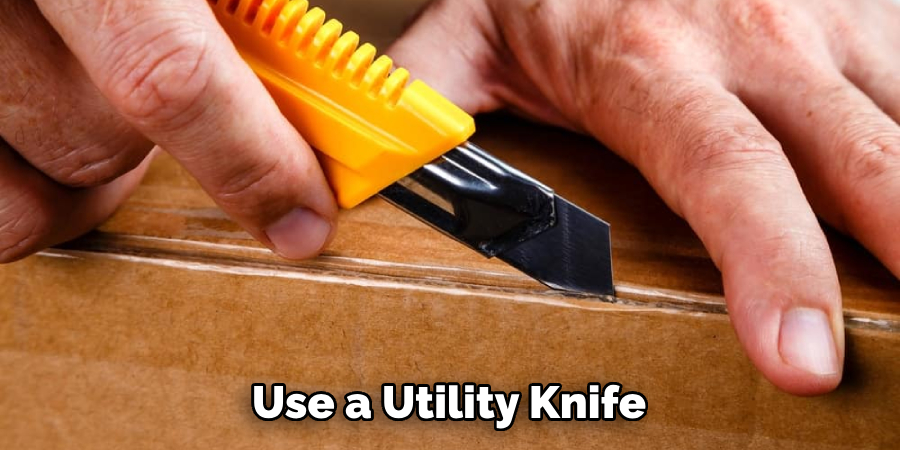
Additional Tips and Tricks to Glue Wood Flooring
1. Make sure to use a good-quality adhesive when gluing wood flooring. This will ensure that the glue is strong enough to hold the flooring securely in place and prevent it from shifting or coming loose over time.
2. Before applying any adhesive, be sure to clean the area with a vacuum cleaner and remove all dirt and debris. This will help ensure that the adhesive bonds securely to the surface.
3. When gluing wood flooring, it is important to use a notched trowel of the appropriate size for the type of floor you are installing. This will help spread the adhesive evenly and make sure that it covers all surfaces properly.
4. Be sure to allow enough time for the adhesive to dry completely before walking on it. This will help ensure that your flooring stays in place and isn’t damaged by foot traffic.
5. If possible, use a fan or dehumidifier to speed up drying time and reduce moisture levels in the area. This will help prevent damage from excess moisture.
6. When gluing wood flooring, it is important to follow the manufacturer’s instructions to ensure that your adhesive and flooring are compatible.
7. To make sure the edges of your newly installed flooring look neat, use a utility knife or saw blade to trim any excess material along the edges.
8. If you need to remove any old adhesive residue, use a scraper or wire brush to gently scrape it away. This will help ensure that the new adhesive bonds properly to the surface of your wood flooring.
9. It is important to continuously monitor humidity levels in the area where you are gluing wood flooring. High levels of relative humidity can cause floors to swell and warp, so using a dehumidifier can help reduce the risk of this happening.
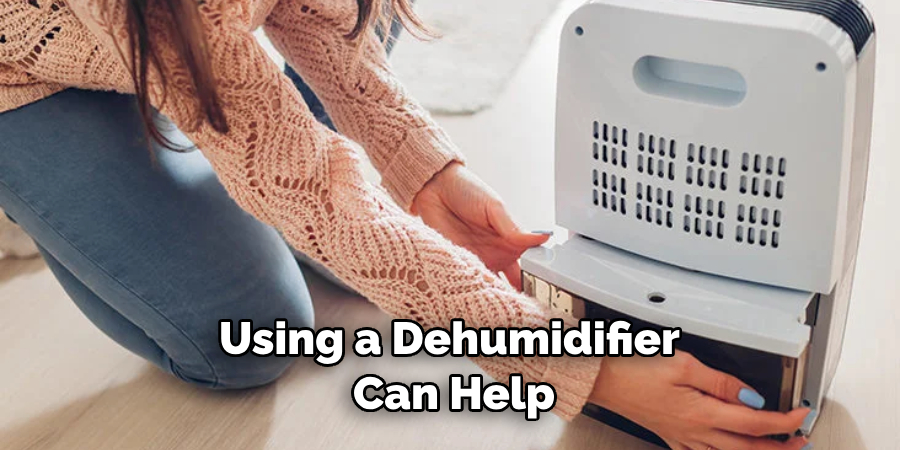
Following these tips and tricks can help ensure that you get a successful result when gluing wood flooring. With the right preparation and care, you can achieve beautiful, long-lasting floors without any problems.
Precautions Need to Follow for Gluing Wood Flooring
1. Choose the right adhesive for your type of wood flooring. Different types of wood require different adhesives, and not all adhesives will adhere to all types of wood. Make sure you know what kind of wood you’re working with before you decide which adhesive to buy.
2. Follow safety precautions when using glue. Read the instructions on the adhesive container and make sure you take the necessary safety precautions, such as wearing gloves and a respirator.
3. Prepare the surface of your flooring properly. Before applying glue to your wood flooring, sand it lightly with very fine-grit sandpaper to ensure that it is clean and even. This will help the glue adhere better to the surface.
4. Make sure your wood flooring is level before gluing it in place. Use a spirit level to check the surface of the floor and make any necessary adjustments to ensure that it is even.
5. Apply the glue evenly and avoid leaving large gaps between pieces of wood. Using a notched trowel, spread the adhesive on the underside of the flooring board and work it into the cracks. Work quickly so that your adhesive does not dry out and make sure you don’t leave any gaps in between the wood pieces.
6. Use a roller to press down on the flooring boards after gluing them in place. This will ensure that they adhere properly to each other, as well as to your subfloor.
7. Allow the adhesive to dry for at least 24 hours before walking on your new wood flooring. This will ensure that the glue has had enough time to set properly and is strong enough to hold everything in place securely.
Gluing wood flooring can be a tricky process, but following these steps can help make sure you get the job done right. Be sure to take all necessary safety precautions and use the right kind of adhesive for your type of wood flooring so that you can enjoy a beautiful, durable new floor for years to come.
Frequently Asked Questions
What Type of Glue is Best for Wood Flooring?
Polyurethane-based glues are the most common type used for wood flooring. These adhesives offer excellent water resistance and durability, making them ideal for high-traffic areas. It is also important to check the manufacturer’s instructions when using a polyurethane-based glue to ensure safe and effective application.
What Kind of Glue Do I Need for Laminate Flooring?
For laminate flooring, it is best to use a water-resistant adhesive specifically designed for this type of material. These glues are available in both solvent- and water-based varieties. For best results, it is important to read and follow the manufacturer’s instructions when applying the adhesive.
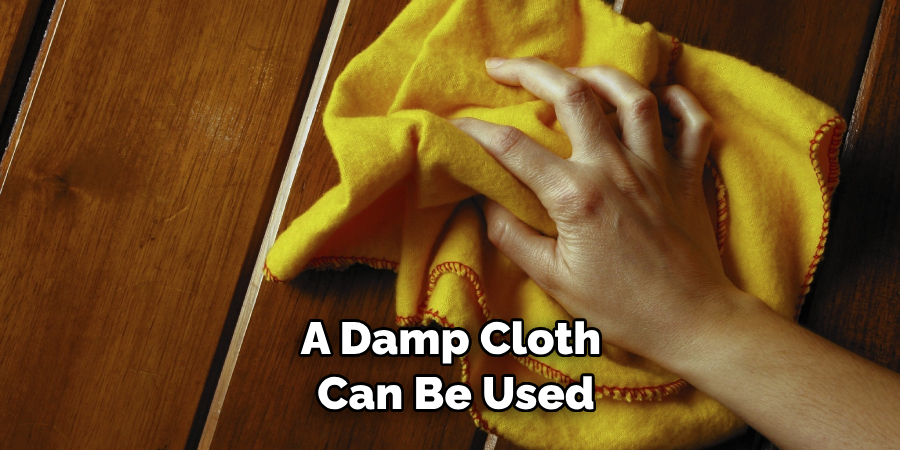
Can I Glue Wood Flooring Directly to the Subfloor?
Yes, in most cases it is possible to glue wood flooring directly to the subfloor. However, it is important to check with the manufacturer of your flooring before attempting this as some types of wood require special preparation or specific adhesives. Additionally, any existing adhesive on the subfloor must be removed before applying new glue.
What is the Best Way to Remove Glue from Wood Floors?
The best way to remove glue from wood floors depends on the type of glue used. For water-based glues, a damp cloth can be used to wipe away any excess residue. However, for solvent-based glues, it may be necessary to use a chemical stripper or special adhesive remover.
It is important to take care when using these products as they can potentially damage the wood flooring. Additionally, it is always best to test in an inconspicuous area first before using any type of remover on a large surface.
Conclusion
With the above outlined you can easily understand how to glue wood flooring and what type of glue to use. Before you begin the project, it is important to carefully read the manufacturer’s instructions and take extra caution when using harsh chemical removers or adhesive strippers. By following these steps, you can ensure that your wood floors are securely glued and look great for years to come!

